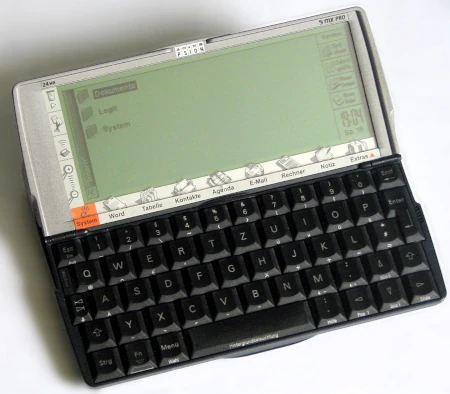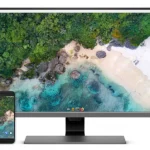Web site: (not active)
Origin: United Kingdom
Category: Mobile
Desktop environment: GUI
Architecture: Intel 8086
Based on: Independent
Wikipedia: EPOC
Media: Install
The last version | Released: ER5u | 2000
EPOC – is a family of operating systems developed by Psion for mobile devices, primarily PDAs. The name EPOC comes from the word epoch (the beginning of an era).
EPOC16, originally simply called EPOC, is an operating system developed by Psion in the late 1980s and early 1990s for the SIxteen Bit Organisers (SIBO) devices. All EPOC16 devices featured an Intel 8086 processor and a 16-bit architecture. EPOC16 is a single-user, preemptive multitasking operating system written in assembly and C and designed to be carried in ROM. The SIBO devices were the MC200, MC400, Series 3, Series 3a, Series 3c, Series 3mx, Siena, Workabout and Workabout mx. The MC400 and MC200, the first devices to run EPOC16, were released in 1989, and as of September 2007 the Workabout mx was still in production. In the late 1990s, this operating system was assigned the name EPOC16 to distinguish it from the new operating system EPOC32.
The first EPOC32 release (Release 1) appeared in the Series 5 ROM v1.0 in 1997. This was followed by the ROM v1.1 Release 3 (Release 2 was never publicly available). This was in turn replaced by the Series 5mx, Revo/Revo plus, Series 7/netBook and netPad (all with Release 5).
The EPOC32 operating system, which was simply referred to as EPOC, was later renamed Symbian. To further confuse the names, before the change to Symbian, EPOC16 was often identified with SIBO to distinguish it from the “new” EPOC operating system. Despite the similarities in names, EPOC32 and EPOC16 were completely different operating systems. EPOC32 written in C++, developed in the mid-1990s.
EPOC32 is a single-user, preemptive multitasking operating system with memory protection, which forced programmers to separate their applications into an engine and a user interface. Psion’s line of PDA devices featured a graphical user interface called EIKON, which was specifically designed for portable devices with keyboards (these probably looked more like desktop GUIs than PDAs). However, one of the things that is unique about EPOC is the ease with which a new GUI can be developed based on a core set of GUI classes, a feature that was widely explored starting with the Ericsson R380.
EPOC32 was initially designed for the ARM family of processors, including ARM7, ARM9, StrongARM, and Intel’s XScale, but can be compiled for devices using other types of processors.
In June 1998, Psion Software became Symbian Ltd., a joint venture between Psion and handset manufacturers Ericsson, Motorola, and Nokia. As of Release 6, EPOC was simply called Symbian.




